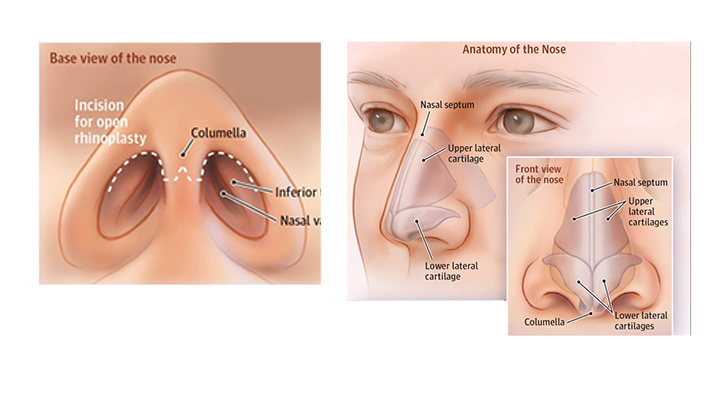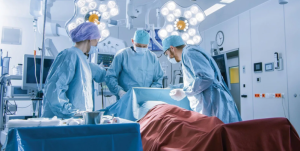About Best Rhinoplasty- What to expect Before and after a nose job 2021
Rhinoplasty commonly known as a nose job is a plastic surgery procedure for altering and reconstructing the nose. Both reconstructive surgery and cosmetic surgery can be performed on the nose – reconstructive surgery restores the structure and functions of the nose and cosmetic surgery changes its appearance. The purpose of reconstructive surgery is to treat nasal injuries caused by blunt, penetrating, or blast trauma. Aside from treating birth defects and breathing problems, reconstructive surgery is also used in the treatment of failed primary Rhinoplasties.
There are many reasons to undergo rib reconstruction. A bump may be removed, nostrils may be narrowed, mouth/nose angles may be changed, or injuries or birth defects may be addressed, along with sinus problems. For About Body Liposuction
In both closed and open rhinoplasties, a plastic surgeon, an otolaryngologist (ear, nose, and throat specialist), or an oral and maxillofacial surgeon (jaw, face, and neck specialist) work together to produce a functional, aesthetic result. Separate the nasal skin from the soft tissues of the nose, altering them as needed for form and function, suturing the incisions, using tissue glue and immobilizing the nose with a package or stent (or both) to ensure proper healing. There is a bone in the upper portion of the nose, and cartilage in the lower. The nose can be altered on three levels: bone, cartilage, and skin. Your surgeon can help you determine if rhinoplasty is right for you and what it can accomplish.
1. Risks
A rhinoplasty carries the same risks as any other major surgery, including:
- Bleeding
- Infection
- An adverse reaction to the anaesthesia
- Difficulty breathing through your nose
- Permanent numbness in and around your nose
- The possibility of an uneven-looking nose.
How you prepare.
Before scheduling rhinoplasty, you must meet with your surgeon to discuss important factors that determine whether the surgery is likely to work well for you.
Your medical history. During your consultation with your doctor, your doctor will ask you about your motivation for surgery and your goals. You will also need to tell your doctor about your medical history – including whether you have had nasal obstructions, surgeries, or medications. Rhinoplasty may not be a good choice for people who have bleeding disorders, such as haemophilia.
Photographs. Several photographs of your nose will be taken from different angles by someone from your doctor’s office. Computer software can be used by your surgeon to manipulate the photos so you can see what kind of results you can expect. These photos will be used for before-and-after evaluations, for reference during surgery, and for long-term analysis by your doctor. A discussion about the surgery’s goals is made much easier by the photos.
A discussion of your expectations. You should discuss your goals and expectations with your doctor. Rhinoplasty may be able to do some things for you that other procedures cannot do. Your doctor will explain how it may benefit you. There is no harm in feeling a little self-conscious about your appearance, but it is important to communicate your wishes to your surgeon. The surgeon may suggest that you undergo surgery to augment your chin if you have a small chin. The illusion of a larger nose is created by a small chin.
The foods and medications we consume.
Before and after surgery, do not take medications containing aspirin or ibuprofen (Advil, Motrin IB, etc.). Bleeding may increase while taking these medications. Follow your surgeon’s orders for medications. Stay away from over-the-counter supplements and herbal remedies.
2. During the surgery
Anaesthesia for rhinoplasty can be local with sedation or general, depending on how complicated the surgery is and the preference of your surgeon. Before surgery, discuss the type of anaesthesia that would be most appropriate for you with your doctor.
Local Anaesthesia with sedation. Anaesthesia of this type is usually performed in an outpatient setting. The anaesthesia is usually localized. During the procedure, a pain-numbing medication is injected into your nasal tissues, and you are sedated with medication injected into an intravenous (IV) line. However, you won’t be completely asleep.
General Anaesthesia. Anaesthesia is administered through inhalation or through a small tube (IV line) placed in a vein in your hand, neck, or chest. When you are under general anaesthesia, you become unconscious and lose consciousness throughout your body. An anaesthetic tube is required for general anaesthesia.
The surgeon can also correct the septum (wall between the two sides of the nose) if it is bent or crooked (deviated). Your recovery will be monitored in a recovery room after surgery. Depending on your health, you might be able to leave later that day or you might stay overnight.
3. Results
It is often measured in millimetres, but small changes to your nose’s structure can have a big impact on how it looks. You can usually get results you are both happy with an experienced surgeon. It is possible that your surgeon might decide to do a second surgery for you if the slight adjustments aren’t enough. During this period, your nose can undergo changes, so you must wait at least one year for the follow-up surgery.







Add comment